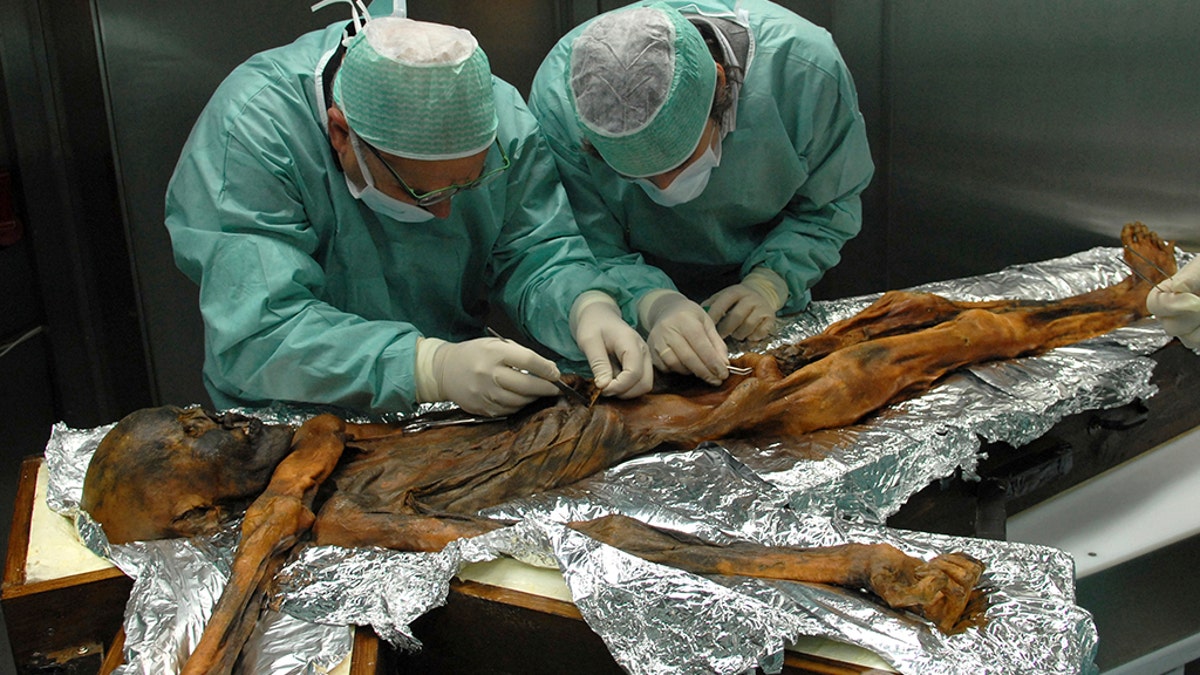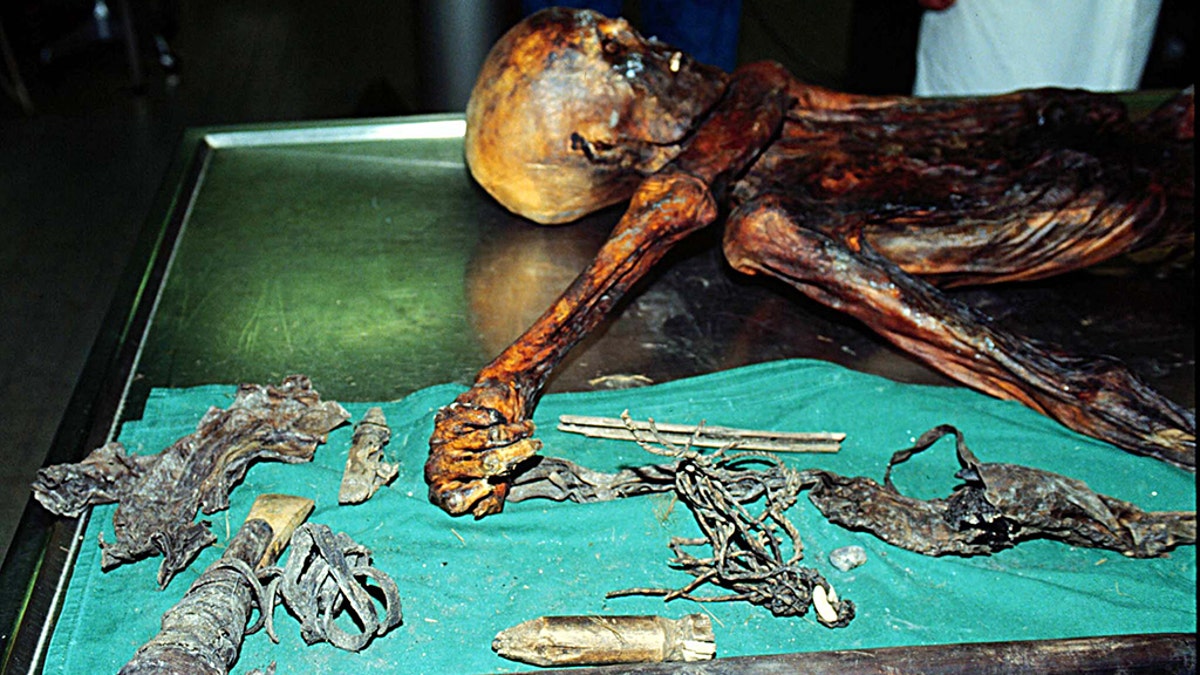
In this November 2010 photo provided by the South Tyrol Museum of Archaeology, researchers examine the body of a frozen hunter known as Oetzi the Iceman to sample his stomach contents in Bolzano, Italy. (Marco Samadelli/Eurac/South Tyrol Museum of Archaeology via AP)
Scientists studying the body of Oetzi the Iceman — a hunter who died in the Alps 5,300 years ago — found that his last meal was particularly well-balanced.
The fat and meat of wild goat, meat of red deer, whole wheat seeds and traces of fern leaves and spores were discovered in Oetzi's corpse, researchers detailed in the scientific journal Current Biology on Thursday.
OETZI 'THE ICEMAN' HAD HEART DISEASE GENES
The leaves and spores may have been unintentionally swallowed or may have been used as medicine for parasites previously found in his gut, according to scientists.
"It was very impressive," Frank Maixner, the leader author and a microbiologist at the Institute for Mummy Studies in Bolzano, Italy, said. "We could see chunks and pieces of food with (the) naked eye."
Oetzi's remains were well-preserved from mummification when his body was found near the border between Italy and Austria in 1991.

The fat and meat of wild goat, meat of red deer, whole wheat seeds and traces of fern leaves and spores were discovered in Oetzi's corpse, researchers detailed in the scientific journal Current Biology. (Marco Samadelli/Eurac/South Tyrol Museum of Archaeology via AP)
In 2009, a radiologist had discovered the iceman's stomach — which was full — had moved upwards, behind his ribcage. Researchers defrosted his body, took samples of his stomach and rehydrated them.
Nearly half of his stomach was filled with body fat from an ibex, a wild goat that still lives in the Alps. While that's a lot of fat, Maixner said it made sense because "they had to be prepared" for the harsh terrain.
"They had to have food that gave them the necessary energy (to survive)," he said.
Albina Hulda Palsdottir, an archaeozoologist from the University of Oslo, believes the findings are very valuable.
"They're trying to use all the methods in the toolbox to answer this really important question of what people were really eating," she said.
STUDY FINDS ANCIENT ICEMAN WORE HAT MADE OF BEAR SKIN
Now, Maixner and his team are hoping to reconstruct the composition of bacteria and other microorganisms that lived in the Iceman's gut, and see how it differs from what modern people show.
"Oetzi is always interesting," Hulda Palsdottir said. "He's already told us so much."
The Associated Press contributed to this report.
